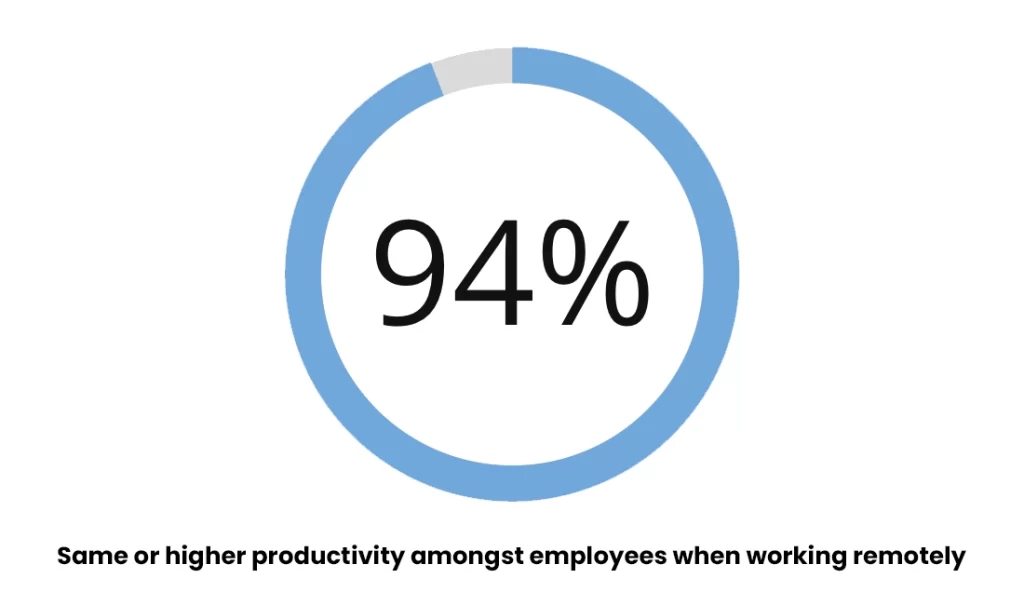
Origins Of Remote Work
The history of remote work goes further back than you might think.
Even before the advent of the internet and widespread rollout, there were different factors at play encouraging people to work from home.
Early Concepts and Telecommuting
It really began taking a recognizable form in the 1970s with the term “telecommuting,” coined by Jack Nilles during the United States energy crisis.
As traffic congestion and long commutes in urban centers became problematic, the idea of working remotely was posed as a solution to reduce travel.
Studies indicated that remote work had the potential to increase productivity and job satisfaction, laying the groundwork for more formal telecommuting programs.
Telecommuting gained some traction by the 1980s, when in 1983 IBM’s remote workforce rose to 2,000 as part of an experiment.
Certain jobs like call center staff were natural fits for remote positions, as their work could be conducted via telephone, allowing them to work from home.

Technological Milestones
The evolution of remote work accelerated with the advancement of technology.
Key technological milestones include the birth of the internet in the 1980s, which laid the foundation for the digital communication tools we rely on today.
Most notably, in the early 1990s, technology advanced to the level where connecting web users around the world became a reality.
This era saw the beginning of the online collaboration tools that would become integral to remote work.
As the internet became widely available, and tools for online communication improved, working from anywhere in the world became feasible.
It was these technological milestones that eventually enabled the widespread adoption of remote work long before the COVID-19 pandemic instigated a global, massive shift towards remote work.
Evolution Through the Decades
Remote work has undergone significant transformations since the 1980s. Each decade bringing pivotal technologies and cultural shifts, paving the way toward today’s digital nomad lifestyle.
1980s: Emergence of Remote Work
In the 1980s, the concept of remote work began to take shape with the rollout of the personal computer.
Innovations like the modem allowed early adopters to access work files from outside the office for the first time.
Companies started to see the potential benefits of telecommuting, with employees carrying out tasks without being physically present at company premises.
1990s: Internet and Connectivity
With the advent of the World Wide Web in the 1990s, the remote work landscape changed dramatically.

Email became a critical tool for communication, and the Internet provided a new platform for sharing information.
The increase of ISPs (Internet Service Providers) allowed more people to connect to the Internet, leading to an increase in remote work opportunities.
The era saw the rise of home offices as more workers began enjoying the flexibility of connecting to their workplaces from afar.
2000s: Mobility and Collaboration Tools
The 2000s marked the entrance of mobility and collaboration tools.
High-speed internet and Wi-Fi became more accessible, and laptops started to replace desktop computers, offering greater versatility for remote workers.
The introduction of smartphones and cloud computing allowed for work to be done from virtually anywhere.
Tools like video conferencing and online project management platforms facilitated team collaboration across distances, making remote work more practical and productive.

2019: COVID-19 And Remote Work
The COVID-19 pandemic served as a catalyst for remote work, with mandatory lockdowns enforcing a shift from office-based to home-based work environments.
A significant uptick occurred in the number of people working remotely.
This dramatic transition to remote work underscored the feasibility and potential productivity benefits of such arrangements.
Since the pandemic, remote work has flourished and become a viable arrangement for both employees and businesses.
Now both company’s and workers have to navigate the new landscape of remote work with a fresh perspective on what working life looks like.
Impact of Remote Work
The adoption of remote work has significantly altered various aspects of both personal and professional life.
These changes are reflected in work-life balance improvements, reshaped business operations, and the nurturing of a global workforce.
On Work-Life Balance
For many individuals, remote work has clearly led to better work-life balance due to the elimination of commuting and more flexible scheduling.
The ability to work from home has provided workers with the options to integrate personal life and work duties more seamlessly.
Data suggests higher engagement rates and increased productivity from remote workers, a testament to this improved balance.
94% of employees polled by Zippia said that their personal level of productivity is the same or higher when working remotely. (Zippia)

On Business Operations
Companies have adopted various technologies to facilitate communication and collaboration.
These changes have required increased cybersecurity measures to protect data integrity.
In terms of hiring, businesses today enjoy a broader talent pool no longer limited by geographical boundaries.
Many companies are now utilizing freelancers at a higher rate than in previous years.
On Global Workforces
Remote work has dismantled traditional geographic barriers and enabled businesses to cultivate global workforces.
With this approach, they benefit from diverse perspectives and can offer around-the-clock services due to differing time zones.
Employees also enjoy the unique perk of potentially working for companies located halfway around the world.
The transition to such a global and more adaptable workforce is a hallmark of the modern, digital age.
Recent Trends and Future Outlook
In recent years, the landscape of work has been reshaped by significant forces: the rise of the gig economy, the COVID-19 pandemic’s impact on remote work, and evolving predictions for the future of employment.
Rise of Gig Economy and Co-Working Spaces
The gig economy has grown substantially, and co-working spaces have spread globally to support this new workforce.
Platforms like Upwork and Fiverr have enabled millions to offer their services on a freelance basis.
These digital marketplaces facilitate the gig economy’s growth by allowing workers to connect with businesses needing temporary or project-specific expertise.
Co-working spaces and virtual offices have become a staple, offering flexible environments for freelancers, entrepreneurs, and even large corporations seeking to reduce traditional office space.
Predictions For Post-Pandemic Work
Looking ahead, remote work is anticipated to continue growing post-pandemic.
By 2025, about 22% of the workforce in America is expected to be working remotely. (Forbes)
Organizations are exploring hybrid models, allowing employees to divide their time between home and the office, which could become the norm in many sectors.
This flexible approach aims to balance the benefits of remote work with the collaboration and community aspects of in-person interactions.
History Of Remote Work Conclusion
The history of remote work in the grand scheme of things is in its infancy.
Wit the rise of technological advancements and changing employee behaviour, the future of remote work promises to be an interesting one.
Frequently Asked Questions

James Waite
Founder of Remoteopia, James has worked in remote roles for 6 years. After a stint in recruitment, he now works as a director of website strategy in tech.




